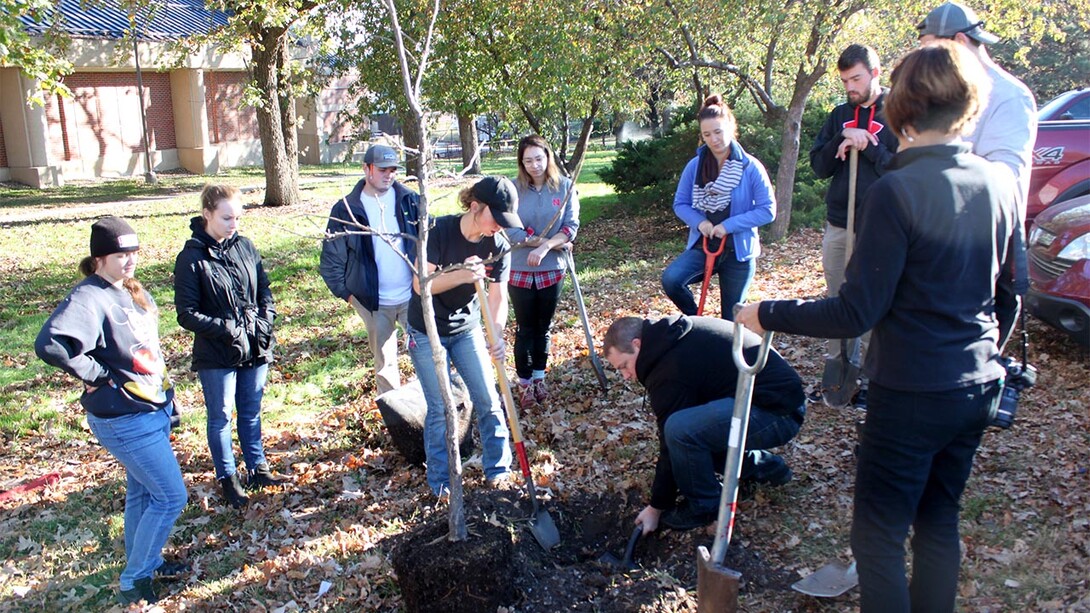
University of Nebraska-Lincoln students are getting their hands dirty – literally – to gain experience in landscape management.
Landscape Services maintains 617 acres – including more than 325 acres of green space – about 9,000 trees and 35 miles of paved sidewalks on the City, East and Nebraska Innovation campuses. To help keep the university in pristine condition, the department turns to paid student workers. Nine students from the College of Agricultural Sciences and Natural Resources, including four from the Department of Agronomy and Horticulture, are among the approximately 25 students helping this school year.
“We work very closely with Landscape Services to foster an on-campus learning experience that at the same time ensures our campus is maintained,” said Kim Todd, associate professor of horticulture, horticulture specialist with Nebraska Extension and licensed landscape architect.
Students handle tasks such as tree and shrub care, installation of turf irrigation systems, trash pickup, garden and greenhouse maintenance and snow removal. While Landscape Services is flexible around class schedules, the students must be able to manage whatever task they are given regardless of the weather.
Jeff Culbertson, assistant director of landscape operations at the university, said students work between five and 20 hours a week, depending on their availability. Students logged about 15,000 hours in 2016, he said.
Culbertson said one advantage to the program, which began in the 1970s, is that students are often more flexible than normal part-time workers. That can come in handy when additional help is needed for tasks such as clearing snow.
“Working year-round and not letting the weather get to me was something I had to get used to,” said Zoe Gildersleeve, a sophomore horticulture major from Alexandria, Virginia.
Along with snow removal, she has been given tasks focused on protecting plants from cold weather.
Gildersleeve said her work with Landscape Services has informed her landscape design in class. After maintaining various gardens and display beds around the university, she said she has a better understanding of how different types of plants affect one another.
“Working with Landscape Services has helped me gain a lot of experience,” she said. “I’m really using it as an opportunity to get a leg up in my classes and down the road in my career.”
Culbertson said the department typically sees a number of student landscape workers because the work aligns with their interests and many are acclimated to working in changing weather conditions.
“Student landscape workers allow us to get assistance in maintaining the campus while also providing them with a great opportunity to gain hands-on experience,” he said.
The work also correlates with material covered in Todd’s landscape design class. Landscape Services has worked with the class on several projects and has found spaces for students to plant to help their classroom learning come to life.
“We’re involved in many planning projects with the landscape design class,” said campus landscape architect Emily Casper. “We also try to give them opportunities to understand the differences between private and public landscapes.”
Both groups are open to collaboration, Todd said, and the relationship has been mutually beneficial.
“It’s a great example of the academic and operational environments working together to foster long-term improvement of the campus learning environment,” she said.
For more information on the program or to apply, click here.








